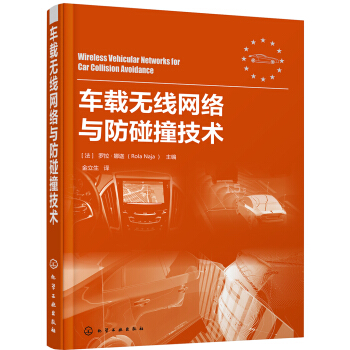

具体描述
内容简介
This book treats that part of Riemannian geometry related to more classical topics in a very original, clear and solid style. Before going to Riemannian geometry, the author presents a more general theory of manifolds with a linear connection. Having in mind different generalizations of Riemannian manifolds, it is clearly stressed which notions and theorems belong to Riemannian geometry and which of them are of a more general nature. Much attention is paid totransformation groups of smooth manifolds.Throughout the book, different aspects of symmetric spaces are treated The author successfully combines the co-ordinate and invariant approaches to differential geometry, which give the reader tools for practical calculations as well as a theoretical understanding of the subject. The book contains a very usefullarge appendix on foundations of differentiable manifolds and basic structures on them which makes it self contained and practically independent from other sources.
The results are well presented and useful for students in mathematics and theoretical physics, and for experts in these fields.The book can serve as a textbook for students doing geometry, as well as a reference book for professional mathematicians and physicists.
内页插图
目录
PrefaceChapter 1.Afne Connections
1.Connection on a Manifold
2.Covariant Differentiation and Parallel Translation Along a Curve
3.Geodesics
4.Exponential Mapping and Normal Neighborhoods
5.Whitehead Theorem
6.Normal Convex Neighborhoods
7.Existence of Leray Coverings
Chapter 2.Covariant Differentiation.Curvature
1.Covariant Differentiation
2.The Case of Tensors of Type
3.Torsion Tensor and Symmetric Connections
4.Geometric Meaning of the Symmetry of a Connection
5.Commutativity of Second Covariant Derivatives
6.Curvature Tensor of an Afne Connection
7.Space with Absolute Parallelism
8.Bianci Identities
9.Trace of the Curvature Tensor
10.Ricci Tensor
Chapter 3.Affine Mappings.Submanifolds
1.Afne Mappings
2.Affinities
3.Afne Coverings
4.Restriction of a Connection to a Submanifold
5.Induced Connection on a Normalized Submanifold
6.Gauss Formula and the Second Fundamental Form of a Normalized Submanifold
7.Totally Geodesic and Auto—Parallel Submanifolds
8.Normal Connection and the Weingarten Formula
9.Van der Waerden—Bortolotti Connection
Chapter 4.Structural Equations.Local Symmetries
1.Torsion and Curvature Forms
2.Caftan Structural Equations in Polar Coordinates
3.Existence of Afne Local Mappings
4.Locally Symmetric Afne Connection Spaces
5.Local Geodesic Symmetries
6.Semisymmetric Spaces
Chapter 5.Symmetric Spaces
1.Globally Symmetric Spaces
2.Germs of Smooth Mappings
3.Extensions of Affine Mappings
4.Uniqueness Theorem
5.Reduction of Locally Symmetric Spaces to Globally Symmetric Spaces
6.Properties of Symmetries in Globally Symmetric Spaces
7.Symmetric Spaces
8.Examples of Symmetric Spaces
9.Coincidence of Classes of Symmetric and Globally Symmetric Spaces
Chapter 6.Connections on Lie Groups
1.Invariant Construction of the Canonical Connection
2.Morphisms of Symmetric Spaces as Affine Mappings
3.Left—Invariant Connections on a Lie Group
4.Cartan Connections
5.Left Cartan Connection
6.Right—Invariant Vector Fields
7.Right Cartan Connection
Chapter 7.Lie Functor
1.Categories
2.Functors
3.Lie Functor
4.Kernel and Image of a Lie Group Homomorphism
5.Campbell—Hausdorff Theorem
6.Dynkin Polynomials
7.Local Lie Groups
8.Bijectivity of the Lie Functor
Chapter 8.Affine Fields and Related Topics
1.Affine Fields
2.Dimension of the Lie Algebra of Affine Fields
3.Completeness of Affine Fields
4.Mappings of Left and Right Translation on a Symmetric Space
5.Derivations on Manifolds with Multiplication
6.Lie Algebra of Derivations
7.Involutive Automorphism of the Derivation Algebra of a Symmetric Space
8.Symmetric Algebras and Lie Ternaries
9.Lie Ternary of a Symmetric Space
Chapter 9.Cartan Theorem
1.Functor s
2.Comparison of the Functor s with the Lie Functor
3.Properties of the Functor s
4.Computation of the Lie Ternary of the Space
5.Fundamental Group of the Quotient Space
6.Symmetric Space with a Given Lie Ternary
7.Coverings
8.Cartan Theorem
9.Identification of Homogeneous Spaces with Quotient Spaces
10.Trauslations of a Symmetric Space
11.Proof of the Cartan Theorem
Chapter 10.Palais and Kobayashi Theorems
1.Infinite—Dimensional Manifolds and Lie Groups
2.Vector Fields Induced by a Lie Group Action
3.Palais Theorem
4.Kobayashi Theorem
5.Affine Automorphism Group
6.Automorphism Group of a Symmetric Space
7.Translation Group of a Symmetric Space
Chapter 11.Lagrangians in Riemannian Spaces
1.Riemannian and Pseudo—Riemannian Spaces
2.Riemannian Connections
3.Geodesics in a Riemannian Space
4.Simplest Problem of the Calculus of Variations
5.Euler—Lagrange Equations
6.Minimum Curves and Extremals
7.Regular Lagrangians
8.Extremals of the Energy Lagrangian
Chapter 12.Metric Properties of Geodesics
1.Length of a Curve in a Riemannian Space
2.Natural Parameter
3.Riemannian Distance and Shortest Arcs
4.Extremals of the Length Lagrangian
5.Riemannian Coordinates
6.Gauss Lemma
7.Geodesics are Locally Shortest Arcs
8.Smoothness of Shortest Arcs
9.Local Existence of Shortest Arcs
10.Intrinsic Metric
11.Hopf—Rinow Theorem
Chapter 13.Harmonic Functionals and Related Topics
1.Riemannian Volume Element
2.Discriminant Tensor
3.Foss—Weyl Formula
4.Case n=2
5.Laplace Operator on a Riemannian Space
6.The Green Formulas
7.Existence of Harmonic Functions with a Nonzero Differential
8.Conjugate Harmonic Functions
9.Isothermal Coordinates
10.Semi—Cartesian Coordinates
11.Cartesian Coordinates
……
Chapter 14.Minimal Surfaces
Chapter 15.Curvature in Riemannian Space
Chapter 16.Gaussian Curvature
Chapter 17.Some Special Tensors
Chapter 18.Surfaces with Conformal Structure
Chapter 19.Mappings and Submanifolds Ⅰ
Chapter 20.Submanifolds Ⅱ
Chapter 21.Fundamental Forms of a Hypersurface
Chapter 22.Spaces of Constant Curvature
Chapter 23.Space Forms
Chapter 24.Four—Dimensional Manifolds
Chapter 25.Metrics on a Lie Group Ⅰ
Chapter 26.Metrics on a Lie Group Ⅱ
Chapter 27.Jacobi Theory
Chapter 28.Some Additional Theorems Ⅰ
Chapter 29.Some Additional Theorems Ⅱ
Chapter 30.Smooth Manifolds
Chapter 31.Tangent Vectors
Chapter 32.Submanifolds of a Smooth Manifold
Chapter 33.Vector and Tensor Fields.Differential Forms
Chapter 34.Vector Bundles
Chapter 35.Connections on Vector Bundles
Chapter 36.Curvature Tensor
Suggested Reading
Index
前言/序言
要使我国的数学事业更好地发展起来,需要数学家淡泊名利并付出更艰苦地努力。另一方面,我们也要从客观上为数学家创造更有利的发展数学事业的外部环境,这主要是加强对数学事业的支持与投资力度,使数学家有较好的工作与生活条件,其中也包括改善与加强数学的出版工作。科学出版社影印一批他们出版的好的新书,使我国广大数学家能以较低的价格购买,特别是在边远地区工作的数学家能普遍见到这些书,无疑是对推动我国数学的科研与教学十分有益的事。
这次科学出版社购买了版权,一次影印了23本施普林格出版社出版的数学书,就是一件好事,也是值得继续做下去的事情。大体上分一下,这23本书中,包括基础数学书5本,应用数学书6本与计算数学书12本,其中有些书也具有交叉性质。这些书都是很新的,2000年以后出版的占绝大部分,共计16本,其余的也是1990年以后出版的。这些书可以使读者较快地了解数学某方面的前沿,例如基础数学中的数论、代数与拓扑三本,都是由该领域大数学家编著的“数学百科全书”的分册。对从事这方面研究的数学家了解该领域的前沿与全貌很有帮助。按照学科的特点,基础数学类的书以“经典”为主,应用和计算数学类的书以“前沿”为主。这些书的作者多数是国际知名的大数学家,例如《拓扑学》一书的作者诺维科夫是俄罗斯科学院的院士,曾获“菲尔兹奖”和“沃尔夫数学奖”。这些大数学家的著作无疑将会对我国的科研人员起到非常好的指导作用。
当然,23本书只能涵盖数学的一部分,所以,这项工作还应该继续做下去。更进一步,有些读者面较广的好书还应该翻译成中文出版,使之有更大的读者群。
总之,我对科学出版社影印施普林格出版社的部分数学著作这一举措表示热烈的支持,并盼望这一工作取得更大的成绩。
用户评价
这套“国外数学名著系列(续一 影印版)”实在是太让人惊喜了!我当初只是抱着试试看的心态收了几本,没想到打开了新世界的大门。尤其是这本《几何VI 黎曼几何》,虽然我还没有深入研读,但单凭其精美的影印质量和厚重的学术分量,就已经让我对它充满了期待。印刷清晰,纸张也很有质感,捧在手里就能感受到知识的沉甸甸的分量。我一直对数学的几何分支情有独钟,尤其是那些能够拓展我们空间想象力的理论。黎曼几何,这个名字本身就带着一种神秘而深刻的韵味,听说它对现代物理学,特别是广义相对论的发展起到了至关重要的作用。我之前接触过一些关于微分几何的入门材料,但总感觉不够系统和深入。这本名著的到来,无疑为我提供了一个深入探索的绝佳机会。我迫不及待地想翻开它,去感受黎曼几何的严谨逻辑和优雅构造,去领略数学家们如何用抽象的语言描绘出我们宇宙的深刻本质。虽然我知道这会是一段充满挑战的学习旅程,但我坚信,每一次对未知领域的探索,都能带来思维的升华和认知的飞跃。我非常期待在这本书的引导下,能够一步步揭开黎曼几何的奥秘,感受其在数学和物理学领域中的强大生命力。
评分在我个人的数学学习路径上,总是希望能够接触到那些经过时间考验、凝聚了无数智慧结晶的经典著作。《几何VI 黎曼几何》,作为这套“国外数学名著系列(续一 影印版)”的一员,从它所处的地位和名字本身,就传递出一种深厚的学术底蕴。虽然我目前还没有时间细致地研读它,但其精良的影印质量,让我能够感受到原作的质感,仿佛穿越时空与原作者对话。黎曼几何,这个词语本身就带有一种令人着迷的魔力,它标志着欧几里得几何的终结,以及对空间更深层次理解的开端。我一直对数学的抽象美和逻辑严谨性深感着迷,而黎曼几何恰恰是这两者的完美结合。我设想着,当我开始阅读这本书时,我会被其精妙的定义、严密的证明所折服,逐步理解曲率张量、里奇张量等概念的深刻含义。我尤其期待书中能够清晰地阐述黎曼几何是如何自然地融入到广义相对论中的,这对于我理解宇宙的运行规律至关重要。这本书,对我而言,不只是一本参考书,更是一次心灵的洗礼,一次对数学美学的深度体验。
评分作为一名业余的数学爱好者,我一直对那些能够颠覆传统认知、构建全新数学框架的著作充满敬意。这套“国外数学名著系列(续一 影印版)”恰恰满足了我对深度和广度的追求,而《几何VI 黎曼几何》更是其中一颗璀璨的明珠。虽然我还没来得及细细品味其中的定理和证明,但光是看到那些精选的国外经典著作被如此完整地影印出来,就足以让我感受到编者们的良苦用心和对学术的尊重。这种原汁原味的呈现方式,对于真正想要理解数学思想的读者来说,是无比珍贵的。黎曼几何,这个名字本身就承载着数学史上的重要转折,它将欧几里得几何的平直空间拓展到了弯曲的度量空间,为我们理解宇宙的结构提供了革命性的视角。我常常在想,那些伟大的数学家们是如何在抽象的空间中构建出如此精妙的理论,又是如何用数学的语言来描述我们所处的现实世界。这本书,无疑将带我进入一个更高级、更抽象的几何世界,去探索度量、曲率、测地线等概念的深刻内涵。我甚至想象着,当我沉浸其中时,那些复杂的公式和定理会在我脑海中逐渐清晰起来,如同拼图一般,最终构成一幅完整的数学图景。我非常欣赏这种不惜成本、力求真实的出版态度,这不仅是对经典的致敬,更是对后来者的馈赠。
评分我必须说,这套“国外数学名著系列(续一 影印版)”的出现,简直是给像我这样的数学爱好者和研究者们送来了一份厚礼。《几何VI 黎曼几何》这本书,虽然我目前还处于初步翻阅阶段,但其所代表的学术价值和历史意义,已经让我对其充满了无限的敬意。影印版的形式,最大限度地保留了原作的风貌,那种历史的厚重感扑面而来。我一直对微分几何及其在物理学中的应用非常感兴趣,而黎曼几何无疑是这一领域的基石。它所描述的弯曲空间,不仅仅是数学上的一个抽象概念,更是我们理解宇宙运行规律的关键。这本书,对我而言,不仅仅是一本教材,更是一扇通往数学殿堂深处的大门。我期待着能够在这本书的引导下,深入理解黎曼流形的构造、度量张量的性质,以及它们如何被用来刻画空间的几何特性。我尤其好奇书中会如何处理那些复杂的微分算子和张量分析,这些都是黎曼几何的核心工具。我想象着,当我在某个夜晚,手捧这本书,在灯光下仔细推敲每一个公式,理解每一段论证时,我会感受到一种智力上的愉悦和成就感。这是一种纯粹的、不受干扰的学术探索,而这本书,正是这场探索的起点。
评分对于我来说,选择一本合适的数学著作,就像是选择一个值得信赖的向导,带领我深入探索未知的数学世界。《几何VI 黎曼几何》,作为这套“国外数学名著系列(续一 影印版)”中的一员,从它朴实无华的外表下,我看到了蕴含的无限智慧。我还没有真正开始学习书中的内容,但单凭其作为“名著”的名号,以及影印版的严谨制作,就足以让我对其抱有极大的信心。我一直对那些能够用数学语言描述物理世界奥秘的书籍情有独钟,而黎曼几何,恰恰是连接数学与物理的桥梁之一。它所提出的弯曲空间的思想,不仅深刻地影响了我们对几何的理解,更直接催生了爱因斯坦的广义相对论。我设想,当我沉浸在这本书的海洋中时,我会逐步领悟到流形的拓扑结构、度量张量的作用,以及曲率如何决定空间的形状。这将会是一次思维的重塑,一次对空间本质的全新认识。我期待着,这本书能够帮助我跨越那些看似高深的理论门槛,真正地掌握黎曼几何的核心思想,并将其与我所了解的物理学知识融会贯通。这不仅仅是一次阅读,更是一次智力的远征。
相关图书
本站所有内容均为互联网搜索引擎提供的公开搜索信息,本站不存储任何数据与内容,任何内容与数据均与本站无关,如有需要请联系相关搜索引擎包括但不限于百度,google,bing,sogou 等
© 2025 book.coffeedeals.club All Rights Reserved. 静流书站 版权所有

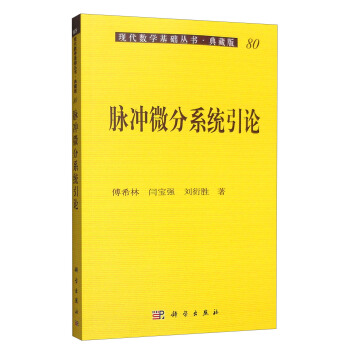
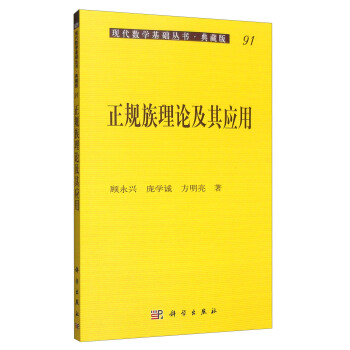

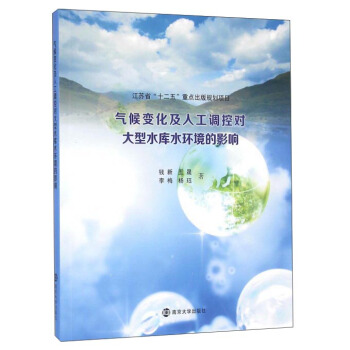
![有限元方法选讲(英文版) [Series in Information and Computational Science·Collector's Edition 48:Selected Topics in Finite Element Methods] pdf epub mobi 电子书 下载](https://pic.windowsfront.com/11937285/578df661Nd47e31bf.jpg)


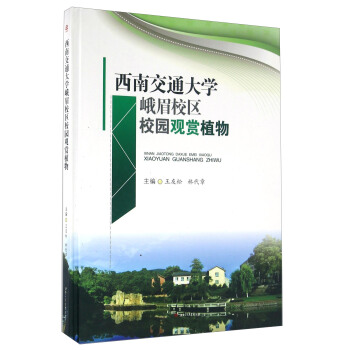

![国外数学名著系列(影印版)5:数值数学 [Alfio Quarteroni Riccardo Sacco Fausto Saleri:Numerical Mathematics] pdf epub mobi 电子书 下载](https://pic.windowsfront.com/11946894/5773bd83Ne641d393.jpg)


![北美水生态区保护 [Freshwater Ecoregions of North America A Conservation Assessment] pdf epub mobi 电子书 下载](https://pic.windowsfront.com/11960157/57ce8ddeN5a93d893.jpg)

![精要速览系列:有机化学(第2版 导读版) [Organic Chemistry(Second Edition)] pdf epub mobi 电子书 下载](https://pic.windowsfront.com/11963154/578df66bN92f28297.jpg)

![太赫兹技术 [Terahertz Techniques] pdf epub mobi 电子书 下载](https://pic.windowsfront.com/11967430/576a68c8N73516a4d.jpg)
